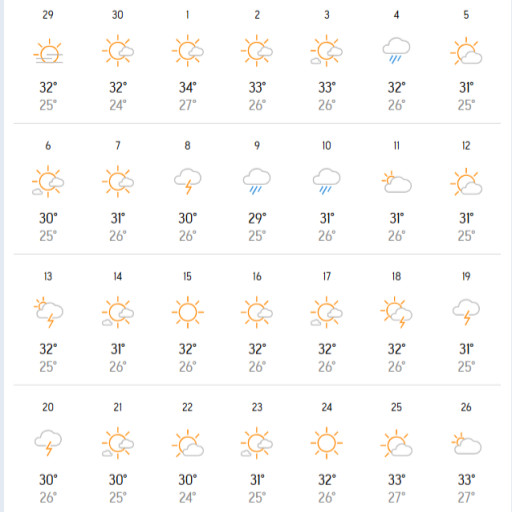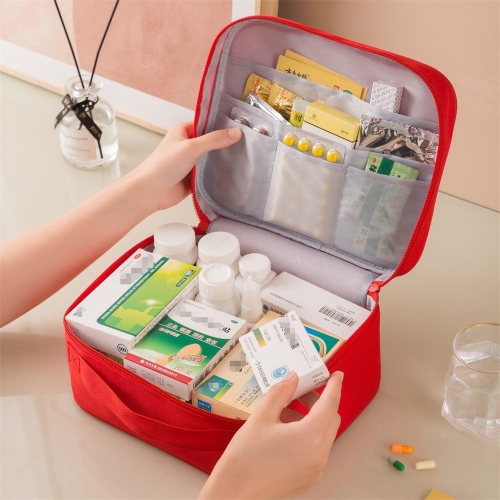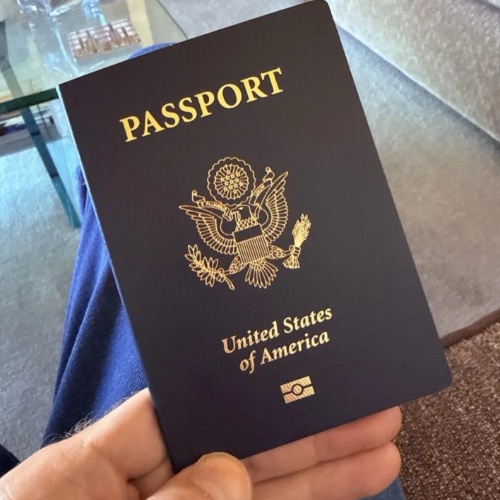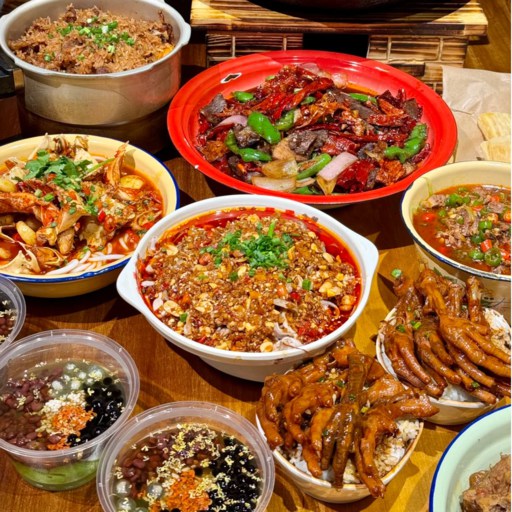When prepping for a trip to China, it’s easy to get stuck in packing chaos: worrying if you’ve got the right visa docs, a power bank that won’t be seized, or clothes for both northern cold and southern humidity. This kind of overthinking often leads to overpacking useless items while missing essentials—and that’s exactly why a targeted packing list for China is a must, not a nice-to-have.
So we’re cutting through all the useless fluff—because let’s be real, who has time for that? We’ll focus only on what you actually need for your 2025 trip. We’ll cover critical docs like passport validity rules, tech must-haves (including VPN and adapters), local payment tips, weather-specific clothing, and hygiene essentials other lists ignore. This packing list for China keeps your luggage light and your trip smooth—whether you’re in Beijing’s streets or Guangzhou’s markets. Let’s get you packed right.
Essential Travel Documents: What You Must Pack Before You Fly
Valid Passport (The 6-Month Rule Everyone Forgets)
And here's where almost everyone trips up—Your passport needs to have no less than six months remaining from the day you enter the People's Republic of China. Chinese border officials will also recheck when you show up. I really have seen people directed back to check-in because they miss such an obvious rule.
But that's not all; it must be in fairly good condition, too. Border control take one look at pages torn out or water logged and they'll tell you no. Missing visa pages? That's another knock-back. Pull out your passport right now, before you even think about packing, and make sure there's enough time left on it. Running close? Get it renewed first thing before anything else.
China Visa: What You Need to Know Before You Apply
You should begin your visa application about one month before your trip. Especially with the peak seasons, such as the Chinese New Season, you need even more lead time. The standard tourist L-visa is valid for up to 90 days only with the maximum stay of 30 days allowed. Embassy processing normally takes four to five working days. However, I suggest giving yourself two full weeks just in case something wrong happens.
Now this is the part that gets people into trouble: you need to have round-trip flight bookings and hotel reservations in hand before going to apply for a visa. Some cities offer 144 hours or 240 hours of visa-free transit. Only hitch is that you must bring that onward ticket to a third country. Beijing, Shanghai, Guangzhou, Chengdu - they are all in on this program. And remember: no matter how you're doing it make sure you not just have a digital copy but also paper backup copies of your visa approval.
Planning a short stopover in China? Read China Transit Visa: From 144 Hours to 240 Hours (2025 Update): Policy, Ports, and Itineraries to get the latest updates.
Travel Insurance (The Safety Net You Hope Not to Use)
The cost of travel insurance ranges from $30-80 for a two-week trip, not unreasonable. To take an example, what you need for your policy to China is mainly getting the basics right with some extras, such as Medical Emergencies and Trip Cancellations (see below). And be sure to find one which includes coverage for COVID-related expenses as well. Some policies may not cover lockdowns scot-free if they mess up your travel schedule. so make sure to read all the fine print.
And here's something more concrete that might make medical coverage matter to you: Chinese hospitals insist on cash upfront for emergencies, irrespective of whether or not they are actually an emergency per se. The unpaid bills pile up fast without coverage. A friend of mine had an accident, needed four stitches and was handed a bill for 2,400 Yuan (about $330). But he got reimbursed three weeks later by his insurance company once he put in his claim at their office. How about without coverage? It all comes out of your pocket.
Paper Copies for Everything
I understand, we live by our mobiles nowadays. But some Chinese customs and Hotels still accept nothing less than the printed page. So, print off your hotel bookings, your flight details; or if you have them completed in advance before leaving home – train tickets. Throw the insurance policy in as well while you're at it. Not asking you to print out every e-mail as long as it shows you have a place to stay and some method of transportation at least.
The thing is, sometimes customs officials may want concrete evidence of your hotel bookings. And waving around a cellphone doesn't always impress them so much. Those paper copies become your lifeline if your baggage has gone astray or your battery dies. Put them in a sealed bag in your hand luggage. Keep separate from your important documents just to be safe.
Tech Essentials: How to Stay Connected, Charged, and Online in China

China travel apps you can’t miss
Phone and Important Apps
The Great Firewall blocks Google, Facebook, Instagram, WhatsApp, and Gmail and Chinese app stores don't host VPN apps so you can't download them after arrival. This makes pre-installation absolutely crucial for accessing Western services. Popular choices include ExpressVPN, NordVPN, and Astrill.
Your smartphone particularly becomes your lifeline for navigating, translation, and staying in touch. What you need to get should be downloaded before you hop aboard your plane. Google Play doesn't work in China. Get Baidu Maps for finding your way around and Pleco for translating Chinese. Both can be used offline--you need only download the maps and dictionaries once.
WeChat also needs to be installed before coming over since most social stuff goes through WeChat. Chinese businesses and people rely on WeChat far more than on e-mail or texting. The app also manages mobile payments once you've tied it to a bank card. Take care of Didi for hailing taxis and Trip.com for train tickets. These apps only register properly if they're provided with Chinese phone numbers.
Your phone’s connectivity decides how smooth your journey goes; read Will My Phone Work in China? 2025 Guide to SIM, Apps, and Connectivity to stay connected everywhere.
Portable WiFi Router or Local SIM Card
Rent a portable WiFi router at the airport for ¥15-30 daily. These little devices power multiple gadgets at once with unlimited data included. Or go with a local SIM card for ¥50-150, gets you 10-30GB depending. Either route gives you solid internet access the whole trip.
Plus, major airports and tourist spots have WiFi rental counters right when you land. Book portable routers online beforehand and you'll snag better rates. China Mobile, China Unicom, China Telecom—they all sell prepaid SIMs. Just bring your passport because government rules require registration for any SIM purchase.
Confused by China’s SIM card choices? Read 4 Best SIM Card Options for Your China Travel to get a detailed comparison.
Universal Power Adapter and Converter
China's got Type A, Type C, and Type I outlets floating around. Most newer hotels hook you up with multiple outlet types right in your room. Older spots and anywhere rural? They're usually Type I only. Grab a universal adapter that handles all three and you're golden.
Here's another thing—China runs on 220V while North America sits at 110V. Most phone and laptop chargers switch between voltages automatically, no problem. Check your device specs before plugging anything in though. If your gear only does 110V, you'll need a voltage converter on top of the adapter. Fair warning: those converters add bulk and weight to your luggage.
Better safe than sorry when it comes to voltage; read China Mains Plug Guide 2025: Adapters, Voltage & Charging Tips and protect your gear.
Power Bank (With 3C Certification)
A 10,000-20,000mAh power bank keeps your phone alive through those marathon sightseeing days. Heads up though—Chinese domestic flights demand that power banks show 3C certification marks. Airport security will straight-up confiscate yours if it's missing that stamp. Give your power bank a once-over before you pack it.
One more thing—keep your power bank in your carry-on, never in checked bags. Airlines ban lithium batteries from checked luggage worldwide, full stop. Chinese brands like Xiaomi and Anker sell certified ones locally if you want to buy there. But bringing your own means you've got reliable backup power from minute one.
Low battery at the worst time? Browse Top 3C Certified Power Banks to Buy in 2025: Travel-Ready and Globally Approved to find the best travel-safe chargers for peace of mind.
Payment Methods in China: How to Pay Like a Local

Alipay and WeChat Pay
Alipay and WeChat Pay (Your Digital Wallet)
Basically, Alipay and WeChat Pay run the show for payments in China—street food, taxis, everything. Tons of vendors only take digital payments and turn down cash outright. The international versions of these apps support foreign credit cards now. But setting them up takes some verification steps that eat up time.
What you want to do is link your foreign credit card to these apps before you leave home. Both platforms hit you with small foreign transaction fees on each payment. Most restaurants, shops, transit services display QR codes for you to scan. You just scan their code and punch in what you're paying.
Struggling to make small payments while shopping in China? Browse All You Need to Know About WeChat Pay and Alipay Mobile Payments and Alipay Setup Guide for full, easy-to-follow info.
Chinese Yuan (Cash Still Matters)
Keep ¥1,000-2,000 in physical cash on you for smaller vendors and backup situations. Rural spots and mom-and-pop shops sometimes can't handle digital payments at all. ATMs show up all over cities but good luck finding them in remote areas. Swap your money at airports or banks—they give you better rates.
Another tip—hang onto small bills like ¥10, ¥20, and ¥50 notes. Taxi drivers and street vendors rarely have change for ¥100 bills, creates this whole awkward situation. Banks and hotels will exchange currency but their fees bounce around. Oh, and tell your bank you're traveling so they don't freeze your cards thinking it's fraud.
Foreign Credit Cards (Limited Acceptance)
Big international hotels and chain businesses take Visa and Mastercard no problem. Smaller places though? They want UnionPay, Alipay, or straight cash. Chinese ATMs ding you ¥15-30 every withdrawal if you're using foreign cards. Your home bank probably stacks on extra international fees too.
Smart move is carrying at least two different credit cards as backup. Sometimes one card goes through while another gets rejected for who knows what reason. Contactless payment isn't everywhere in China yet either. Plenty of terminals still need you to insert the chip or sign for stuff.
Don’t know which foreign card works best at checkout? Check Best 8 Credit Cards for China: Travel Smarter, Pay Easier (2025) to make the right choice.
Duty-Free Shopping Strategy (Airport vs. Hainan Tips)
Ever wandered through Beijing Capital or Shanghai Pudong airport and thought, “Should I buy this perfume now or wait till I land?” You’re not alone. China’s big airports overflow with cosmetics, liquor, and high-end brands. Prices are lower than city shops but not always by much once exchange rates kick in. The duty-free limit sits at ¥12,000 per person (about $1,700), so if you splurge on that designer bag, keep your receipts close — customs can surprise you.
Now, if you’re chasing real bargains, Hainan Island is where things get interesting. Sanya’s massive duty-free malls let you shop way beyond airport limits (¥100,000 for locals, slightly less for tourists) and the deals there? Sometimes 20–30% cheaper. Many travelers literally fly there just to shop. So, if that sounds like your vibe, slot Hainan into your plan and peek at our complete duty-free shopping guide for insider hacks.
Ready to splurge at Hainan’s duty-free shops? Check Hainan Offshore Duty Free Policy 2025 — Pets, Mini Drones & Musical Instruments Added to the List! and clear all shopping barriers.
Clothing Essentials: How to Dress Smart for China's Changeable Weather

Shanghai July Weather
| Season | Temperature | Clothing Recommendations |
|---|---|---|
| Spring (March-May) | 10–25°C (50–77°F) | Light jacket, long sleeves, convertible pants, and a compact raincoat for showers |
| Summer (June-August) | 30°C+ (86°F+) | Breathable shirts, shorts, sun hat, and sunglasses; choose moisture-wicking fabrics |
| Fall (September-November) | 15–25°C (59–77°F) | Medium-weight jacket, layered outfits, and comfortable walking shoes |
| Winter (December-February) | -10–15°C (14–59°F) | Heavy coat, thermal underwear, warm socks, insulated gloves, and layered outfits |
Thinking about when to visit Shanghai? Check Shanghai Weather by Month: From Misty Skies to Typhoon Nights and get ready for any season.
Spring (March-May): Transitional Weather Gear
Spring weather bounces around a lot depending where you are in China. Northern cities stay on the cooler side, hovering around 10-20°C (50-68°F). Southern spots warm up quicker, hitting 20-25°C (68-77°F) by May rolls around. Pack a light jacket, some long-sleeve shirts, and convertible pants.
Spring also dumps rain showers pretty regularly across most regions. Bring along a compact rain jacket or umbrella for when those downpours sneak up on you. Mornings and evenings still have that chill to them in most cities. But midday sun can get surprisingly warm, so you'll want fewer layers then.
Summer (June-August): Hot and Humid Essentials
Summer heat and humidity take over all of China from June straight through August. Temps regularly push past 30°C (86°F) in the major cities. Southern regions? Especially brutal with that sticky humidity. Pack lightweight, breathable stuff made from moisture-wicking fabrics that actually let your skin breathe.
Don't forget a sun hat and decent sunglasses for when you're out and about. UV levels crank up noticeably during summer months across the board. Light-colored clothes bounce heat better than dark ones. Maybe throw in a small towel too for dealing with sweat during those intense sightseeing marathons.
Fall (September-November): The Ideal Travel Season
Fall delivers the sweetest weather conditions for traveling around China, hands down. Temps settle in that nice 15-25°C (59-77°F) range in most places. Northern areas cool off faster than southern provinces do. Pack similar stuff to spring but maybe throw in slightly warmer layers.
Fall also brings clear skies and hardly any rain in most spots. This is peak season though, so tourist crowds pack popular destinations. Bring a medium-weight jacket for those cooler evenings and early morning starts. Overall you'll need fewer layers than springtime requires.
Winter (December-February): Serious Cold Weather Prep
Northern China gets absolutely brutal in winter—temps drop below -10°C (14°F) regularly. Central regions hang around 0-10°C (32-50°F) during winter months. Southern areas stay relatively chill at 10-15°C (50-59°F). Pack a serious winter coat if you're hitting northern destinations.
You'll also want thermal underwear, warm socks, and insulated gloves for those cold regions. Indoor heating quality varies wildly across different places you'll stay. Lots of southern buildings don't even have central heating systems at all. Layer your clothes so you can adjust when moving between freezing outdoors and whatever temperature indoors happens to be.
Health and Hygiene: How to Stay Fresh, Safe, and Healthy Across China

Travel First Aid Kit
Essential Health Supplies
Throw together a small first aid kit with the core meds and supplies you might need in your packing list for china. Pain relievers, stomach medicine, antihistamines, motion sickness pills—cover your bases. Band-aids, antiseptic wipes, and blister treatments handle those minor scrapes and issues that pop up. Bring prescription drugs in their original bottles with labels you can actually read. Carry a doctor's note just in case, and pack extras in case your trip runs long.
UV radiation hits pretty hard across most Chinese regions year-round, so slapping on sunscreen daily isn't optional. Grab moisturizer too if you're heading to dry climates up north or high-altitude spots. Reapply that sunscreen when you're doing outdoor stuff. Summer months down south? Mosquito repellent becomes your friend.
Hygiene and Sanitation Essentials
Public restrooms in China often skip soap or paper towels entirely—just being real with you. Always keep hand sanitizer on you, at least 60% alcohol, plus travel-size wet wipes for cleaning your hands, wiping down tables, dealing with sticky phone screens. Pack several small packages and spread them across your different bags. Pocket tissues are clutch since many toilets don't provide paper, especially at parks and transit stations. Some bathrooms charge ¥1–2 for paper, so having small change helps smooth that out.
Toss in a few personal hygiene items you prefer from home—feminine products, deodorant, whatever—since local versions can feel totally different. Having your go-to stuff prevents you from hunting through unfamiliar stores when you'd rather be exploring.
Hydration and Safe Drinking
Never drink tap water straight from faucets in China—just don't risk it. Boil hotel water or top up at filtered dispensers using your reusable bottle. Bottled water only costs ¥2–3, but buying constantly creates so much waste. Your own bottle saves cash and helps out the environment. Electric kettles are standard in hotels for safely boiling water.
Planning outdoor adventures? Pack electrolyte tablets to keep yourself properly hydrated when the heat cranks up. Reusable bottles also work great for tea or coffee refills—super common among locals when they're traveling around.
Common Questions About Packing for China (FAQ)
Q: What should I pack for China in summer?
Summer in China can be blazing hot and humid, especially in cities like Shanghai and Guangzhou. Pack breathable clothes, sunscreen, a hat, and lightweight shoes. Locals often carry a small towel or fan for the heat. Don’t forget a 220V-compatible adapter for your electronics. If you plan to hike or explore rural areas, toss in insect repellent and moisture-wicking socks. When creating your packing list for China</strong>, make sure to include quick-dry fabrics that can handle the summer humidity.
Q: Is it cold in China in November?
November varies wildly depending on where you go. Northern cities like Beijing can drop below 5°C (41°F), while southern cities like Shenzhen stay around 20°C (68°F). Pack layers — a mid-weight jacket, long sleeves, and comfortable walking shoes. Expect dry air up north, so lip balm and moisturizer will save you. A smart <strong>packing list for China</strong> in November should balance warm clothes for the north and lighter layers for the south.
Q: Do I need to pack toilet paper for China?
Yes — seriously. Many public restrooms in China don’t stock toilet paper or soap. Always keep pocket tissues and hand sanitizer in your bag. You’ll thank yourself later when exploring parks or train stations. It’s one of those travel hacks every foreigner learns fast. Every packing list for China</strong> should include small hygiene items like these — they’re lifesavers in unexpected moments.
Q: Can I bring gifts to China, and what are good ideas?
Absolutely! Small, thoughtful gifts go a long way in China, especially if you’re meeting hosts or new friends. Think souvenirs from your hometown, like chocolates, pens, or magnets. Avoid anything too expensive — it can make people uncomfortable. Skip clocks or umbrellas, since they carry unlucky meanings in Chinese culture. A thoughtful packing list for China</strong> often includes a few personal gifts to share, which helps break the ice with locals.
Q: Should I pack food from home?
If you have dietary restrictions or comfort snacks you love, bring a few. China’s snacks are amazing but different — spicy, sour, or unfamiliar to Western palates. Protein bars, instant oatmeal, or coffee sachets are smart backups. You’ll find supermarkets everywhere, but foreign products can be pricey. Your packing list for China</strong> should include a few go-to snacks that make long travel days easier.
Q: What kind of shoes should I wear for China trips?
You’ll walk — a lot. Chinese tourist sites and city subways mean 10,000+ steps daily. Choose sturdy, broken-in shoes with arch support. Waterproof sneakers are perfect for sudden rain. Skip brand-new shoes — blisters in the Forbidden City? Hard pass. The best packing list for China</strong> always includes one pair of reliable walking shoes and one backup pair for casual outings.
Q: Can I use laundry services easily while traveling in China?
Yes, and they’re surprisingly convenient! Most hotels offer same-day laundry, and coin laundromats are popping up in big cities. In smaller towns, you might find local dry-cleaners with signs in English. Include a packing list for China</strong> that favors easy-to-wash clothing and a small travel detergent — it’ll help you pack lighter without worrying about running out of clean clothes.
Q: Do I need travel insurance when packing for China?
It’s not mandatory, but it’s one of those things you’ll be glad to have. Medical care in big cities is excellent but can get expensive for foreigners. Trip delays, lost luggage, or emergencies happen, and having coverage gives peace of mind. Your packing list for China</strong> should always include digital and printed copies of your travel insurance policy and passport, just in case.



